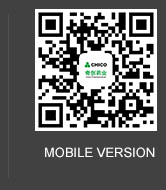



Xalkori (crizotinib), developed by Pfizer Inc., marked a breakthrough in targeted therapies for non-small cell lung cancer (NSCLC) harboring ALK and ROS1 rearrangements. Approved initially by the U.S. FDA in 2011, crizotinib catalyzed a paradigm shift in precision oncology, becoming a cornerstone for treating specific genetic profiles in cancer. This paper reviews its scientific development, regulatory journey, market performance, and competitive challenges. While global sales peaked at $524 million annually, the rise of second-generation ALK inhibitors and generic competitors has reshaped its market position. Additional indications, including inflammatory myofibroblastic tumors (IMT), reflect ongoing clinical relevance..jpg)
Crizotinib, Xalkori, NSCLC, ALK inhibitors, ROS1 inhibitors, targeted therapy, Pfizer, oncology, market competition.
Crizotinib (Xalkori) represents a targeted therapy for treating cancers driven by abnormal tyrosine kinase signaling. Its primary indications include metastatic ALK-positive and ROS1-positive NSCLC, along with systemic ALK-positive anaplastic large cell lymphoma (ALCL) and refractory inflammatory myofibroblastic tumors (IMT). Since its FDA approval in 2011, crizotinib has shaped the field of molecularly driven cancer treatments. This paper provides a detailed overview of Xalkori, including its approval timeline, market performance, and competitive landscape.
Crizotinib is a multitarget tyrosine kinase inhibitor, primarily inhibiting ALK, ROS1, and c-Met (HGFR). These pathways are crucial in tumor cell proliferation, survival, and metastasis. By targeting these kinases, crizotinib effectively halts tumor progression in malignancies characterized by these genetic aberrations.
Under the brand name Xalkori, crizotinib delivered $524 million in global sales in 2023. Initial adoption was strong due to its novel mechanism and favorable outcomes in PROFILE clinical trials. However, subsequent ALK inhibitors offering improved central nervous system (CNS) penetration have reduced its market share.
In China, crizotinib gained rapid acceptance post-launch, with inclusion in the National Reimbursement Drug List (NRDL) in 2020 bolstering its accessibility. Despite competition, it remains a significant revenue contributor in emerging markets.
The advent of second-generation ALK inhibitors has presented significant challenges:
Generic crizotinib, produced by manufacturers such as Hansoh Pharma, has drastically reduced treatment costs, intensifying price competition.
Beyond NSCLC, crizotinib is approved for treating ALK-positive systemic ALCL and refractory IMT, showcasing its versatility across oncology indications. Ongoing research into combination therapies aims to overcome resistance mechanisms.
Crizotinib's efficacy continues to be explored in combination with immunotherapies and chemotherapy. Emerging studies suggest potential applications in other ALK-driven malignancies, highlighting its sustained clinical relevance despite market competition.
Xalkori (crizotinib) remains a landmark in oncology for its pioneering role in molecularly targeted therapy. While competition from second-generation inhibitors and generics has redefined its market dynamics, its contributions to precision medicine endure. Understanding its development, regulatory milestones, and market trajectory provides a window into the challenges and opportunities in the evolving oncology landscape.
877399-52-5
Crizotinib (Xalkori) (chemical grade, purity ≥99.0%) is currently supplied by our company. [Own compliance factory, fully support factory audit] For details, you can call the bottom line to get the latest price of the product!
Photo Credit: Pexels (pictures are not products, not actual characters, for display only). If there is infringement, we apologize for deletion. If there is any mistake, welcome criticism and correction.
Note: The information or opinions expressed herein are for informational purposes only and do not constitute investment advice to anyone.




International Department:

Copyright(C)2018 Anqing Chico Pharmaceutical Co., Ltd.
Supported byChinaChemNet
